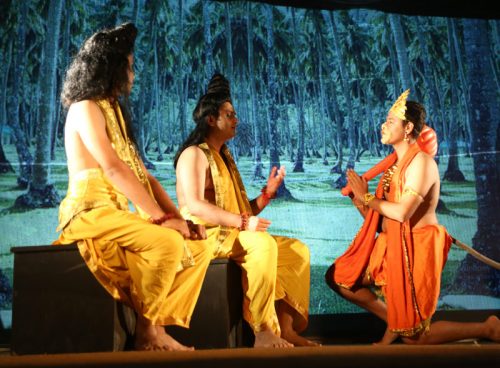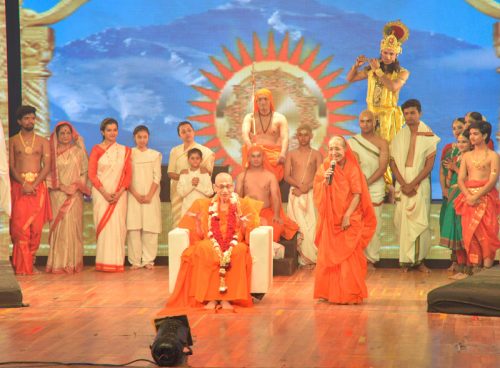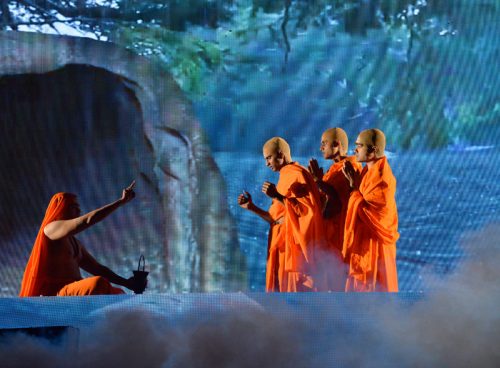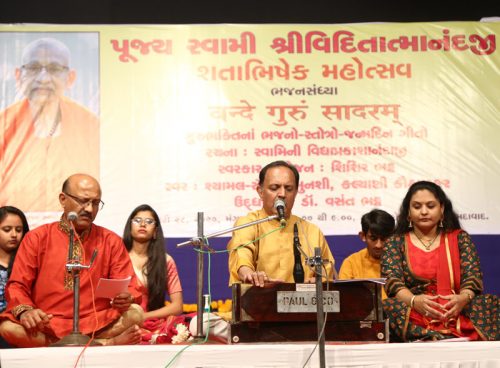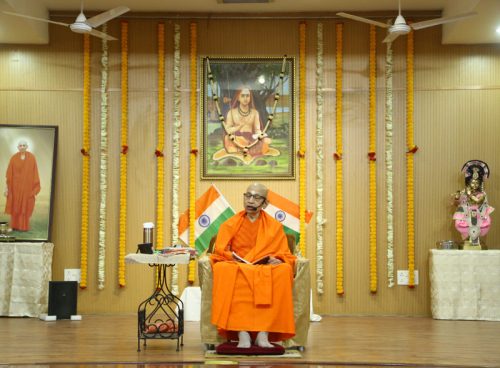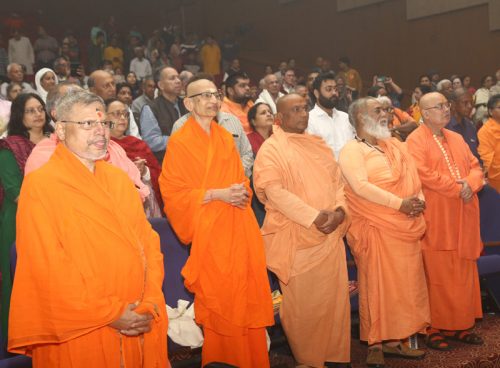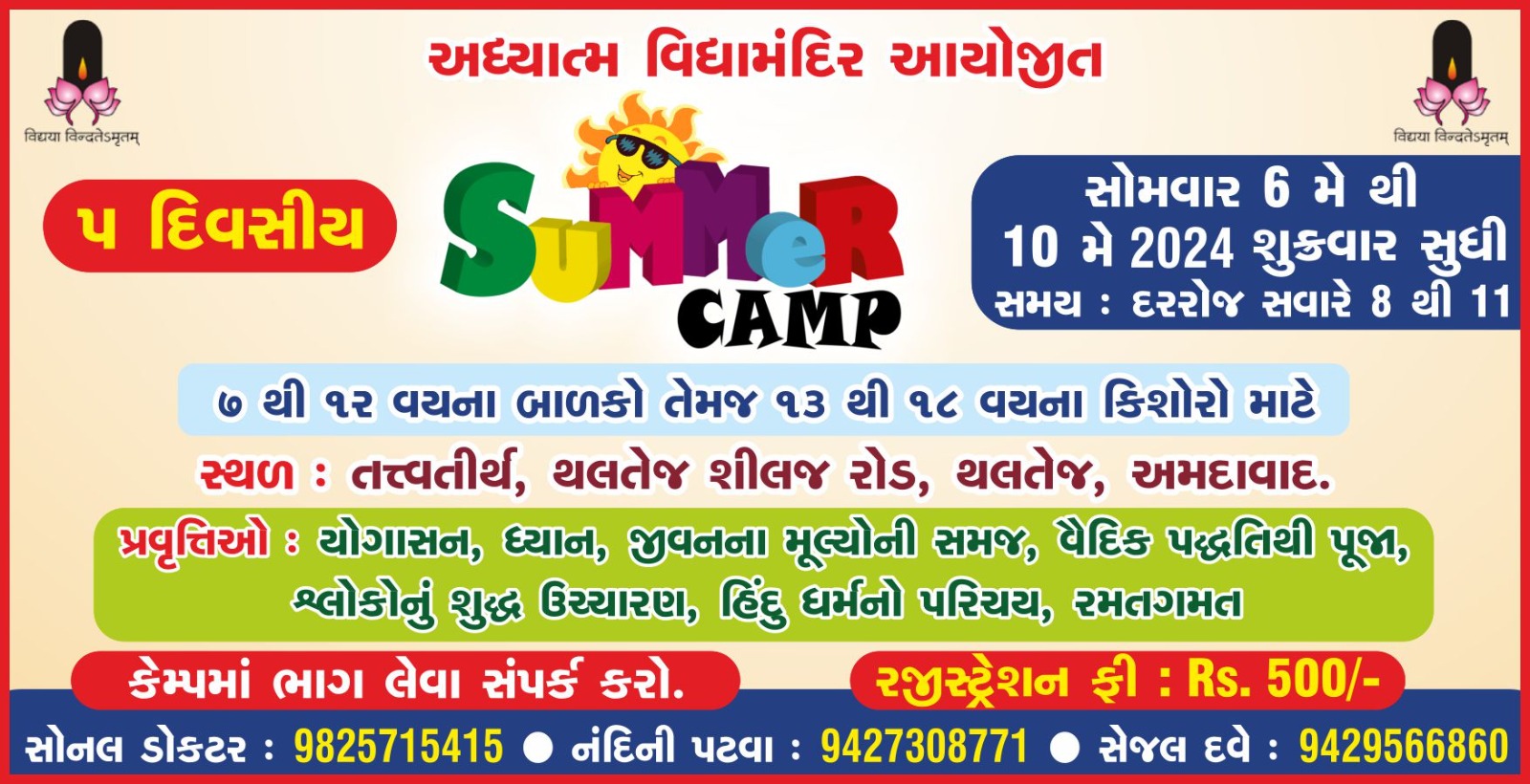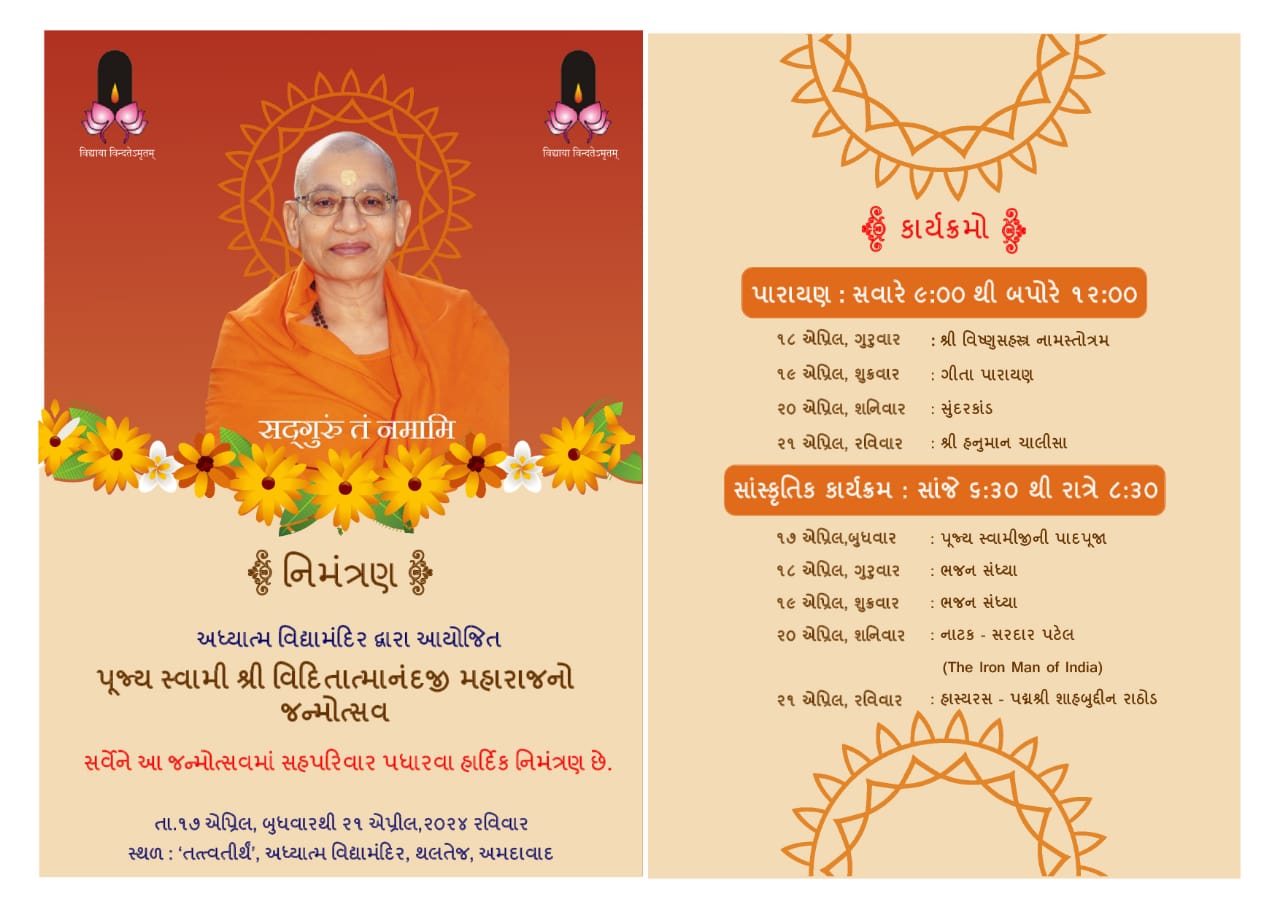The event was then ornamented with cultural programs during the three evenings of 27, 28 and 29 th January, 2020. The cultural program in fact started on January 26 th Sunday evening, with a bhajan program, as many guests had already arrived by then. So that’s how the Mahotsava began. On January 27 th , the Navadha Bhakti play was presented, which depicted the stories of the very famous devotees of the Lord. Highlighting the different phases of Bhakti, different characters were portrayed, and so śravaṇam was Parīkṣit, kirtanam was Caitanya Mahāprabhu, smaraṇam was Prahlāda, pādasevanam was Goddess Lakṣmī, sakhyam was Sudāmā, ātmanivedanam was King Balī. These stories were very beautifully depicted highlighting the bhakti in our tradition. The play was conceived and written by Swamini Paraprajnanandaji and directed by Dr. Vikram Panchal. The presentation was done in Hindi language. The play was very well presented, and the various scenes were projected very dramatically throughout the drama and people highly appreciated this presentation.
Next evening, in the Tagore Hall, the Vande Gurum Sadaram, a musical bhajan evening was presented, where the famous artists Shyamal – Saumil Munshi and Kalyani Kauthalkar and Group, were invited to sing the compositions on Guru and Guru Bhakti composed by Swamini Vidyaprakashanandaji. All these compositions which were in Gujarati as well as Sanskrit, mainly on the Guru, Swaminiji expressed very eloquently her devotion for the Guru, and also the sense of gratification and the gratitude that she experiences for what she has received from the Guru. These compositions were simultaneously devotional as well as based on the teachings of the scriptures, which showed not only her devotion, but also her scholarship, and also her facility of composition — the ease with which she composed these was very evident. This program was very well presented by the singers and the musicians, and very well received by the audience. During the Bhajan Sandhya, a Puja was performed to Pujya Swamiji during which, 125 silver BilvaPatras were offered to Pujya Swamiji, 108 of which were in the form of a mālā and the rest as the crown.
On the 29 th January evening, was presented the drama of Jagadguru Adi Shankaracharya, the revised version of the one presented ten years ago. The play was presented with LED and so it was much more effective this time. The play was written by Swamini Vidyaprakashanandaji and directed by Dr. Vikram Panchal. The actors were all selected by Dr. Vikram Panchal, and the play was presented at Pandit Dinadayaal Auditorium. The life of Jagadguru Bhagwan Shankaracharyaji was very effectively depicted through this play and the play was very highly appreciated by the audience. The highlight of the play was the presentation of the Vedic culture, the Vedic heritage as well as the basic principles of the Hindu tradition, the basic teachings as well as the form of the religious and the cultural tradition through the life of Adi Shankaracharyaji. It was not only the life of Adi Shankaracharyaji, but also the teachings of the Vedas and the other Hindu scriptures. So this was very well done by Swamini Vidyaprakashanada Saraswatiji.

